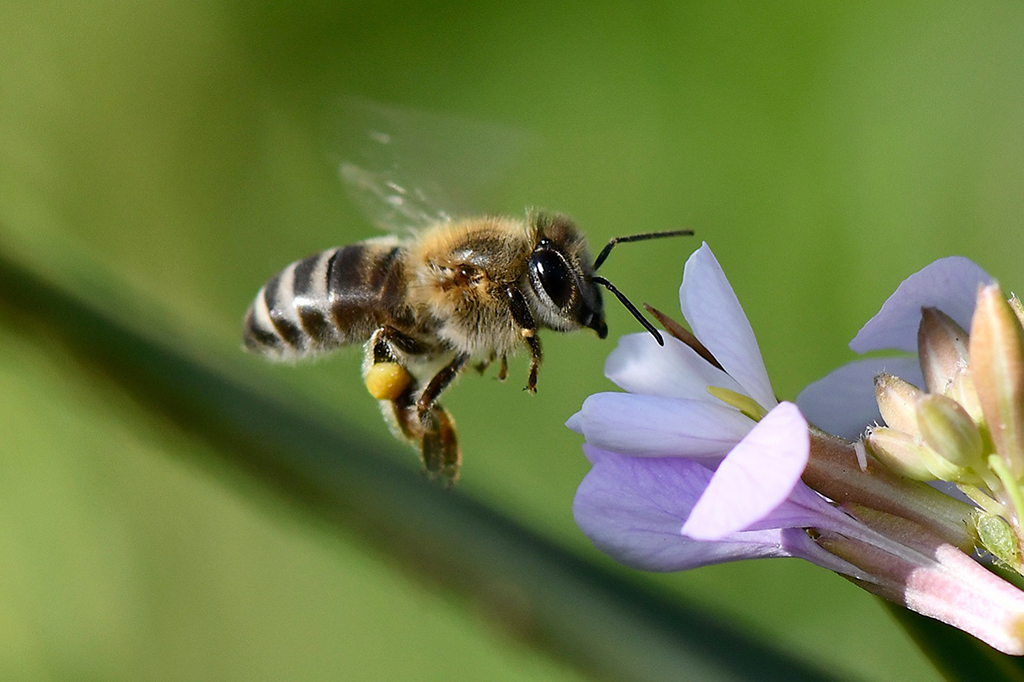KUWAIT: With the onset of dawn, swarms of bees permeate the branches of sidr trees entwined with the sun's rays, rushing towards the small yellow flowers hanging down. From a distance, the view appears as a slow-motion video that captures pictures of bees shaking and dancing in front of the flowers. Kuwaiti beekeeper Salem Al-Oumi describes the bee as a simple creature that does not like complexity, having a special language that is expressive and rhythmic, seen in how when a stray bee returns to the hive with news of the presence of nectar, pollen or water, it performs an expressive dance, where each dance and movement has a meaning and signal through which it determines the location of the nectar and the distance.
Speaking to KUNA, Oumi said Tuesday that the bee dances in the presence of the workers in a circular or vibratory manner, sometimes to the right and left, in a rapid rhythm for half to a full minute, after which all the worker bees prepare to go out to collect nectar according to a precise roadmap. The most well-known types of honey in Kuwait are of three types - from sidr trees, from which sidr honey is extracted that Kuwait is well-known for, along with eucalyptus and willow, from which spring honey is extracted, he said.
Kuwait annually imports around 20,000 bees, at prices ranging between KD 15-20, during two periods. The first during the months of March and April, and the second during the months of September and October of each year, Oumi said. The cost of a beehive with bees ranges between KD 40-45 and produces three to five kilograms during a season, he explained. The bee visits about 100 flowers and transports in each round more than half of its weight of plant pollen, he added, indicating that there are roughly 320 types of honey that differ in color, flavor and smell.
Kuwait's honey has a global presence and a desert imprint that topped advanced ranks, Oumi underscored, mentioning that the secret of the quality of Kuwaiti honey is due to the fact that it is the product of pastures in desert areas, which are low in moisture, producing honey of high quality since it obtains the best types of nectar. The most crucial factors impacting the quality of honey in general are measured by two main factors - the percentage of sugars and moisture, he explained.
Sidr honey is one of the best types of honey in the world and the price per kilogram is around $150, Oumi said. Willow honey has a golden yellow color, whereas eucalyptus honey has a dark amber color and distinctive aroma, he added. Kuwait's farms host over 15,000 beehives, as the average number of beekeepers reached nearly 300 including amateur apiarists, with the number increasing, he pointed out.



There are over 20,000 bee species worldwide, including Italian, Russian, Caucasian, German and Egyptian bees and countless other types, Oumi mentioned. In order for the bee to have one kilogram of honey, it travels between flowers a distance equivalent to the Earth's circumference, he revealed. Between 20,000-30,000 bees live in one hive, and the worker bees warm the hive during the winter by flapping their wings, while middle-aged workers build a honeycomb, he said.
Kuwait's annual production of honey ranges from 25-35 tons annually, Oumi explained, saying the price of Kuwaiti honey ranges between KD 10-30 per kilo. Bees use types of poisonous nectar, as they secrete some enzymes on it then spray it on insects that attack their hive, who then die of suffocation, he revealed. He pointed to the most vital problems faced by beekeepers, including high temperatures during the summer, which kills most bees and spring birds, indicating the cost of beekeeping per hive is estimated at KD 30. Honey is the first product of the hive, not the last, as after that comes wax and queen's food, then pollen, propolis and finally bee venom, he added.
Propolis is that dark substance surrounding the frame of the hive, as it appears black as a result of its accumulation, containing many benefits and is considered one of the most powerful antibiotics, he stated. Bee propolis is a greenish-brown resin that bees collect from trees and buds of some plants in order to use it to narrow the entrances to the hives, he noted. With regard to royal jelly or bee's milk, it is more like thick milk secreted by worker bees to feed the queen and larvae. - KUNA





